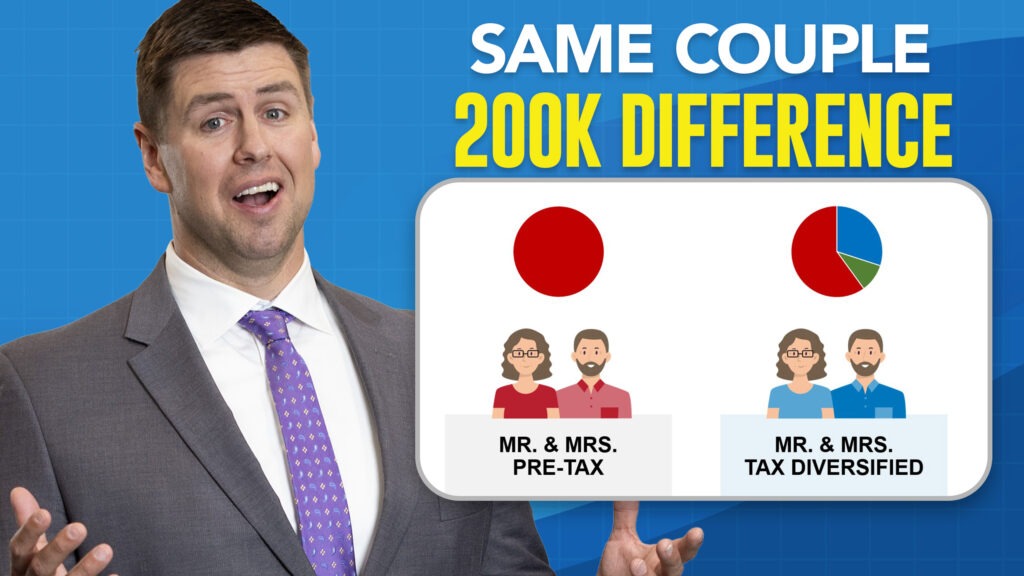Taxes can quietly take a big bite out of your nest egg if you don’t plan ahead. Relying on old assumptions from your working years can lead to costly mistakes once you pivot to drawing down your assets. That’s why it’s crucial to understand some of the most common—and sneaky—tax traps that can surprise retirees.
–––––––––––––––––––––––––––––––––––––––––––––––––––––––––––––––––––––––––––––––––––––––––––––
Here are four retirement tax traps, along with strategies from experienced Retirement Planners Loren Merkle and Chawn Honkomp, to help you keep more of what you’ve worked so hard for.
Tax Trap #1: Misunderstanding Tax Brackets
Many people assume that moving into a higher tax bracket means all their income is taxed at that higher rate. In reality, only the income that falls within a specific bracket gets taxed at its corresponding rate—this is called your marginal tax rate. Your effective tax rate, which is typically lower, reflects the actual percentage of your total income paid in taxes.
For example, if a married couple files jointly with $150,000 in gross income, after the standard deduction their taxable income drops to $120,000. Their income gets divided among brackets: some is taxed at 10%, some at 12%, and the remainder at 22%.

They don’t owe 22% on the entire $120,000. Here’s how it breaks down, using the 2025 federal tax brackets.

They owe 10% on $23,850, 12% on $73,100, and they owe 22% on $23,050.
Chawn says not understanding this difference may lead some to refuse bonuses or additional income—missing out on opportunities out of fear that “it’ll all be taxed too much.” Understanding how brackets work can empower smarter choices, like whether to take that extra income or convert funds to a Roth IRA.
Tax Trap #2: Required Minimum Distributions (rmds)
RMDs are mandatory withdrawals from pre-tax retirement accounts like traditional IRAs and 401(k)s, which kick in at age 73 or 75, depending on your birth year. These distributions are taxed as ordinary income. If you don’t plan ahead, RMDs can pile on top of Social Security, pension, or other income, unexpectedly pushing you into a higher tax bracket and increasing your overall tax bill for life.

If you’re in your late 50s or early 60s, RMDs may feel far off. But failing to plan early limits your flexibility. Retirement planners recommend developing a long-term tax plan that forecasts your future taxable income so you can take strategic steps now—like making Roth conversions or controlled withdrawals before RMDs hit. This can help spread your tax liability over many years and keep you from getting “trapped” by large, unavoidable RMDs down the road.
If you’re charitably inclined, a Qualified Charitable Distribution (QCD) can be a powerful tax-smart strategy. Starting at age 70½, you can donate up to $108,000 annually (for 2025) directly from your IRA to a qualified charity. Because the funds go straight to the charity, the donation is excluded from your taxable income—potentially lowering your overall tax bill.
In addition to supporting causes you care about, QCDs can reduce the balance of your IRA, which in turn may lower future Required Minimum Distributions (RMDs). Once RMDs begin—at age 73 or 75, depending on your birth year—QCDs can also count toward satisfying your annual distribution requirement.
Tax Trap #3: Capital Gains and Investment Income
Investment gains from non-retirement accounts (brokerage accounts) are taxed differently than ordinary income—often at more favorable rates, but timing is crucial. If you sell an investment after holding it for less than 12 months, you pay short-term capital gains tax at your ordinary income rate.

If you hold for longer than a year, you typically pay the much lower long-term capital gains rate, 0%, 15%, or 20% depending on your taxable income and filing status.

Not paying attention to when you sell investments—even by just a few weeks—can unnecessarily hike your tax bill by several percentage points on investment gains. Loren and Chawn stress the importance of coordinating investment decisions with your tax strategy, so you can intentionally minimize taxes and make the most of every dollar. Reviewing all your “buckets”—pre-tax, Roth, and non-retirement—helps ensure you’re drawing income from the optimal sources each year.
Tax Trap #4: Social Security Taxation
Many retirees are shocked to learn that a substantial portion of their Social Security may be taxable. The taxation is based on a provisional income formula: half your Social Security benefit, plus adjusted gross income and non-taxable interest (interest you received from sources like municipal bonds), determines what percentage of your benefit is taxed. This can range from 0% up to 85% of your Social Security income being taxable, depending on your total retirement income.

Since this calculation is complex and includes other income sources like RMDs and investments, it’s easy to trigger higher Social Security taxes without realizing it. Strategic planning—like coordinating withdrawals and recognizing how each retirement income source affects this calculation—can help some retirees reduce their taxable Social Security (sometimes even to zero!).
The Power of Planning Ahead
All of these tax traps point to one fundamental truth: tax planning for retirement is not a one-year question—it’s a decades-long conversation. Opportunities to reduce your lifetime tax bill abound, but they require intention, information, and often starting sooner than you think.
A comprehensive, long-term tax plan tailored to your unique situation can make all the difference.
Loren and Chawn emphasize that it’s not just about how much you’ve saved for retirement—but also about how you allocate and withdraw those savings in a tax-efficient way. The goal? To keep more of your money by reducing your tax burden in retirement.
Your future self (and your wallet) will thank you.
Click here to watch the full episode “4 Retirement Tax Traps (And How to Avoid Them)” on YouTube!










